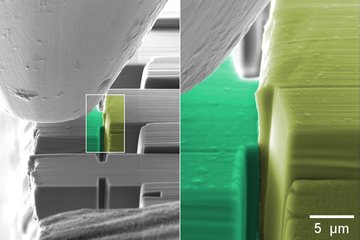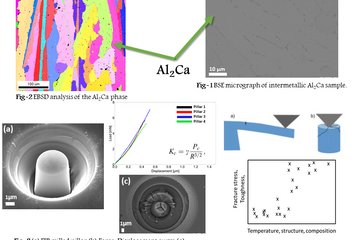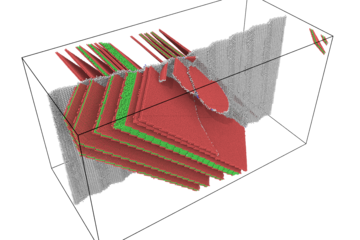All genres
181.
Journal Article
The atmospheric corrosion of iron and steel. Metalurgia Odlewnictwo 16, pp. 45 - 52 (1990)
182.
Journal Article
Neue experimentelle Verfahren zur Untersuchung der atmosphärischen Korrosion von mit dünnen Elektrolytfilmen belegten Metallen. Zeitschrift für Metallkunde 81, 10, pp. 715 - 725 (1990)
183.
Journal Article
Organische Monomere und Polymere auf Stahloberflächen. Farbe und Lack 8, pp. 592 - 597 (1990)
184.
Journal Article
On the Atmospheric Corrosion of Metals, which are covered with Thin Electrolyte Layers. Part 1: Verification of the Experimental Technique. Corrosion Science 30 (6-7), pp. 681 - 696 (1990)
185.
Journal Article
On the Atmospheric Corrosion of Metals, which are covered with Thin Electrolyte Layers. Part 2: Experimental Results. Corrosion Science 30 (6-7), pp. 697 - 714 (1990)
186.
Journal Article
On the atmospheric corrosion of metals, which are covered with thin electrolyte layers. Part 3: The measurement of polarisation curves on metal surfaces which are covered by thin electrolyte layers. Corrosion Science 30 (6-7), pp. 715 - 734 (1990)
187.
Journal Article
Oberflächenanalytische Untersuchungen an selbstorganisierten organischen Beschichtungen auf metallischen Substraten. Elektronenmikroskop. Direktabb. Oberfl. 23, pp. 250a - 250d (1990)
188.
Journal Article
Electrochemical and Electron Spectroscopic Investigations of Iron Surfaces Modified with Thiols. Surface and Interface Analysis 16, 1-12, pp. 278 - 282 (1990)
189.
Journal Article
SEM and SAM Imaging of Silane LB-Films on Metallic Substrates. Applied Surface Science 45, 2, pp. 167 - 170 (1990)
190.
Journal Article
In-situ Mößbauerspectroscopic Investigations of Phase Transformations in Oxide Layers below Organic Coatings. Bunsen-Magazin 93 (11), pp. 1389 - 1395 (1989)
191.
Journal Article
In-Situ Mößbauer Spectroscopic Study of Reactions within Rust Layers. Corrosion Science 29 (11-12), pp. 1329 - 1352 (1989)
192.
Journal Article
In situ Möβbauer spectroscopic study of reactions within rust layers. Corrosion Science 29 (11-12), pp. 1329 - 1352 (1989)
193.
Journal Article
Interaction between S-organic compounds and iron surfaces. Fresenius’ Zeitschrift für Analytische Chemie 333 (4-5), p. 545 (1989)
194.
Journal Article
The Investigation of the Corrosion of Metal Surfaces, Covered with Thin Electrolyte Layers - A New Experimental Technique. Berichte Bunsengesellschaft Physikalische Chemie 92 (11), pp. 1244 - 1250 (1988)
195.
Journal Article
Electron Spectroscopic and Electrochemical Investigations of Chemically Modified Iron Surfaces. Berichte Bunsengesellschaft Physikalische Chemie 92 (11), pp. 1335 - 1341 (1988)
196.
Journal Article
The investigation of the corrosion properties of metals, covered with adsorbed electrolyte layers-A new experimental technique. Corrosion Science 27 (8), pp. 869 - 872 (1987)
197.
Journal Article
The Influence of Copper upon the Atmospheric Corrosion of Iron. Corrosion Science 27 (9), pp. 905 - 926 (1987)
198.
Journal Article
Investigations Toward Understanding of the Atmospheric Corrosion Processes of Pure Iron. Materials and Corrosion - Werkstoffe und Korrosion 34 (12), pp. 604 - 612 (1983)
199.
Journal Article
An Electrochemical Study of Phase Transitions in Rust Layers. Corrosion Science 23 (9), pp. 969 - 985 (1983)
200.
Journal Article
An Electrochemical and Magnetic Study of Phase-Transitions in Rust-Layers during the Atmospheric Corrosion of Iron. Journal of the Electrochemical Society 130 (8), p. C313 (1983)











